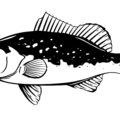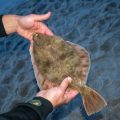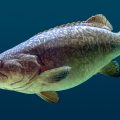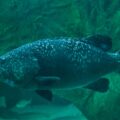The golden grouper (Saloptia powelli), also called the pink grouper or Powell’s grouper is a species of marine ray-finned fish. It belongs to the subfamily Epinephelinae, a subfamily of the Serranidae family, which includes anthias and sea basses.
Behavior
As compared to most groupers, this hermaphrodite roams across a wider area. Unlike many members of its family, it will not use the terrain it traverses as a hiding spot or base of operations. They are significantly more competent swimmers than the bulk of their cousins of the same size. Therefore, when foraging for food, they venture out into open water. They also appear to be less fearful of anything than most family members of the same size. They are willing to put up with divers being nearby and may even get close to the diver. With persistence over numerous dives, the diver can discover the fish’s preferred habitat and be rewarded by handfeeding it titbits like cooked eggs.
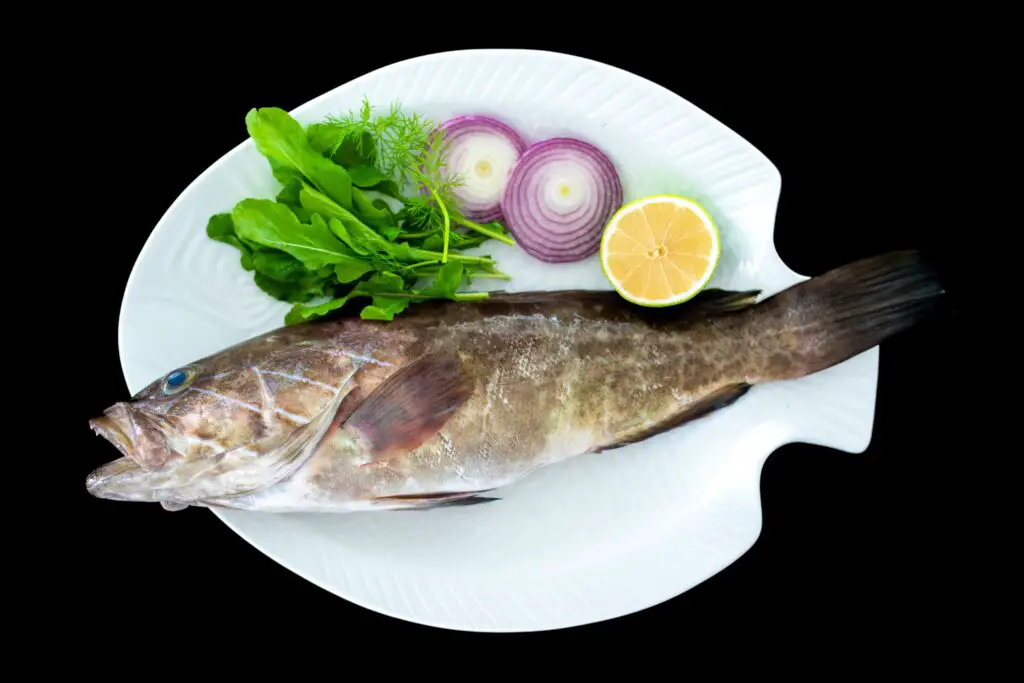
Size
Since each member of the grouper family plays a crucial function in its habitat, grouper size varies by species, type, and stage in the lifecycle at which you discover them. Certain species can have dimensions of up to 3 m (10 ft). Pink groupers’ average size is from 30 to 70 cm, and their greatest size is 100 cm. Some groupers can alter the color of their skin, which is another protection in addition to their potential huge size. To mix in with various degrees of light, this color change might occasionally be as straightforward as going from dark to light.
Habitat
The pink grouper prefers moderately warm waters and rocky seabed, but it can also be found there when there are also sand deposits. The golden grouper can be found in the western and eastern Pacific and Indian oceans, from Christmas Island and the South China Sea in the east to French Polynesia in the north to Taiwan and Okinawa in the south to the Great Barrier Reef.
In contrast to the other groupers, which are often solitary and stationary, it travels in small schools between 20 and 80 meters of water. It searches for fish, crustaceans, and cephalopods while swimming gently for the whole of the day at a set distance from the bottom. While pursuing some prey, some claim it can descend as far as 200 meters.
Because these creatures are euryhaline, they can live in a wide range of salinity conditions. They also somewhat alter their environment as they get bigger. They live in a variety of ecosystems due to their endowment of adaptations that allow them to flourish in a number of environments.
Anatomy
The body, which is moderately tapered and compressed on the sides, can weigh up to 18 pounds for specimens that are 3 feet long, but there have been reports of specimens that are 55 inches long and obviously much heavier. A longer lower jaw is present on the triangular-shaped skull. The operculum displays three strong spines bent toward the tail, while the preoperculum has a serrated bottom.
Every type of prey can be held and chewed by the teeth, which are numerous, varied in shape, and arranged in rows. For capturing fugitives, two enormous hooked caniniform teeth are clearly visible at the tip of the mouth. The shorter anal fin contains only 3 spines and 8 soft rays, compared to the dorsal fin with 11 spiny rays and 15–17 soft ones. Juveniles have large, somewhat rounded tails. Adults have a flat tail with a small concavity. The ventral and spatulate pectoral fins are about the same size.
Regarding color, this species has stripes in shades of pink-red, orange, and white that resemble those of zebras. Additionally, the mature specimens have a dorsal line that extends from the mouth to the dorsal fin and five dark stripes that are dispersed throughout the body.
Biology of Reproduction
Recent research using samples collected in Algeria has revealed that the 19–35 cm long examples feed on around 2/3 fish, almost 1/3 crustaceans, and, in small numbers, mollusks. The 35–50 cm specimens feed equally on fish and ascidians; and the 50–90 cm specimens feed on half ascidians, 14 fish, and another 14 each of crustaceans, coelenterates, and aquatic plants. The pink grouper is a protogynous hermaphroditic species, meaning that its sexual maturity is attained when it is 30-35 cm long and that its females change into males as they age. Other than these facts, little is known about the golden grouper’s reproductive methods.
Pink Grouper Feeding
These groupers can be thought of as predators, yet they have a special way of devouring their victims. They produce suction through their gills when they are caught, which enables their food to enter their mouths swiftly and with little energy cost. This species’ prey develops in size along with it as it matures. Fish, lobsters, and gastropods are the main foods for adults, while certain crustaceans or bivalves are consumed by the young.
The State of Conservation
Since it was initially a very numerous fish in its original area, overexploitation is one of the major issues this species faces. The golden or pink grouper is now classified as “critically endangered (CE)” by the International Union for Conservation of Nature because of years of overfishing.
Fishing continues to reveal a prolonged and alarming population decline despite the fact that there are current policies in place to control it. The efforts simply aren’t sufficient, so more drastic measures are probably required. From the variation in its coloring patterns to its behavior, this species possesses some of the most astounding traits. Promoting ecotourism, which would aid in conservation efforts and provide income, is thus one potential solution to their issue. Man and nature can sometimes coexist in harmony, or at least that is the ideal we should strive for.
Bottom Line
-
- Unique among groupers, the pink kind is also thought to be the best tasting. The large flakes of pink grouper have a mild flavor that is distinctive and generally palatable.
-
- Although it is a rare species, the golden grouper is valued as a key food fish. Compared to most family members their size, they also seem to have less fear of everything. Out of the many grouper species that exist, this particular pink grouper is quite interesting.

